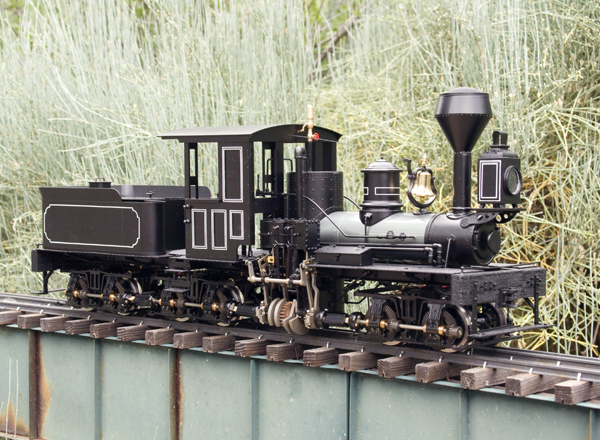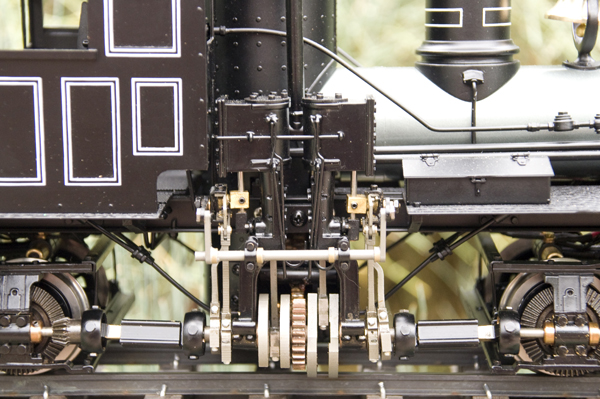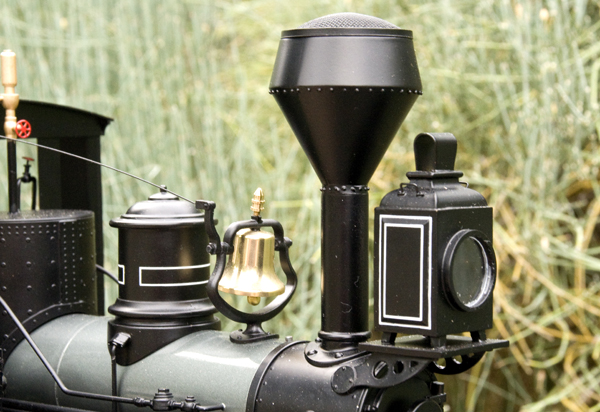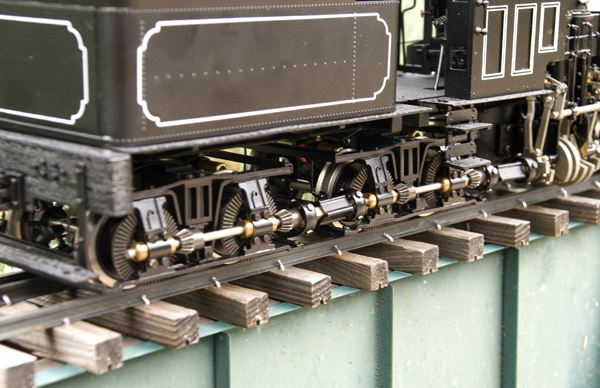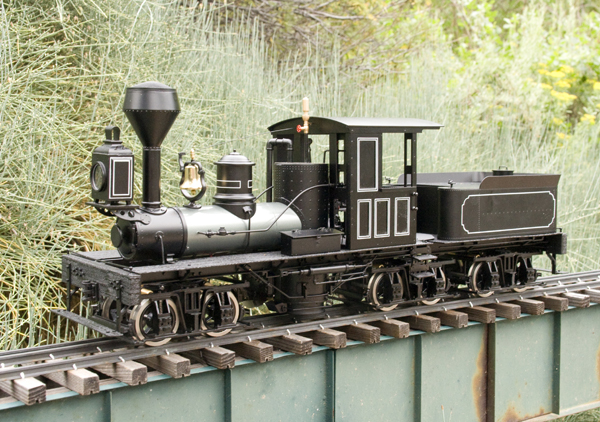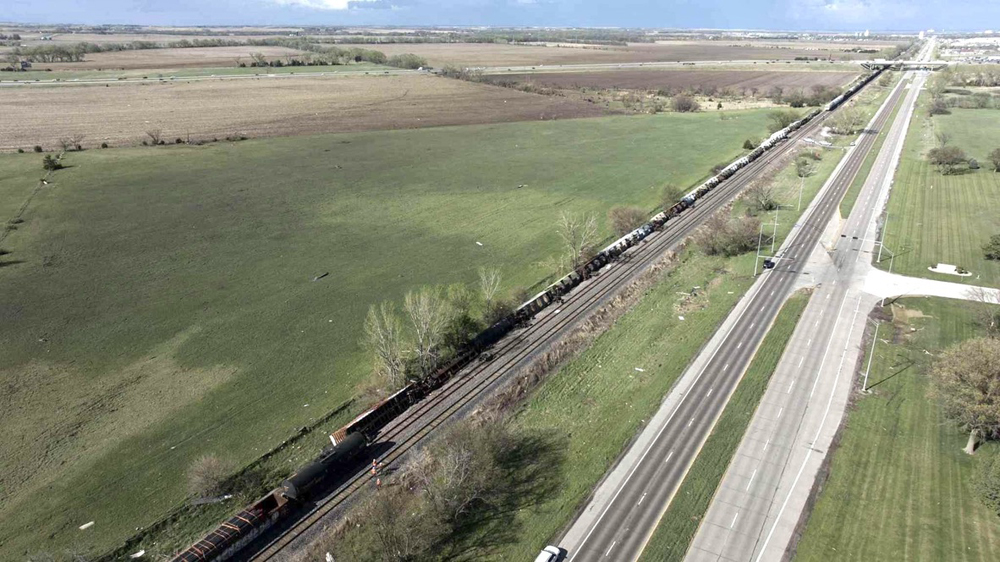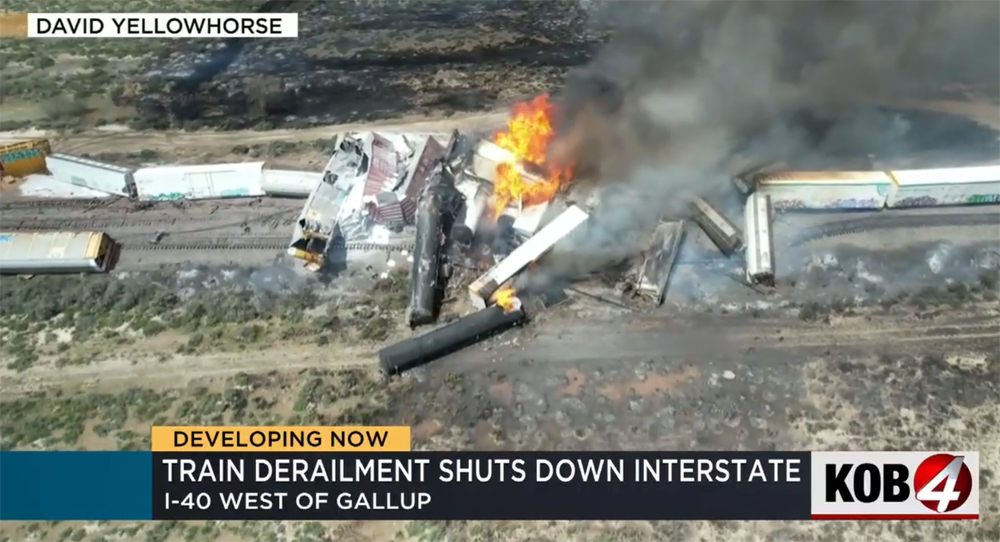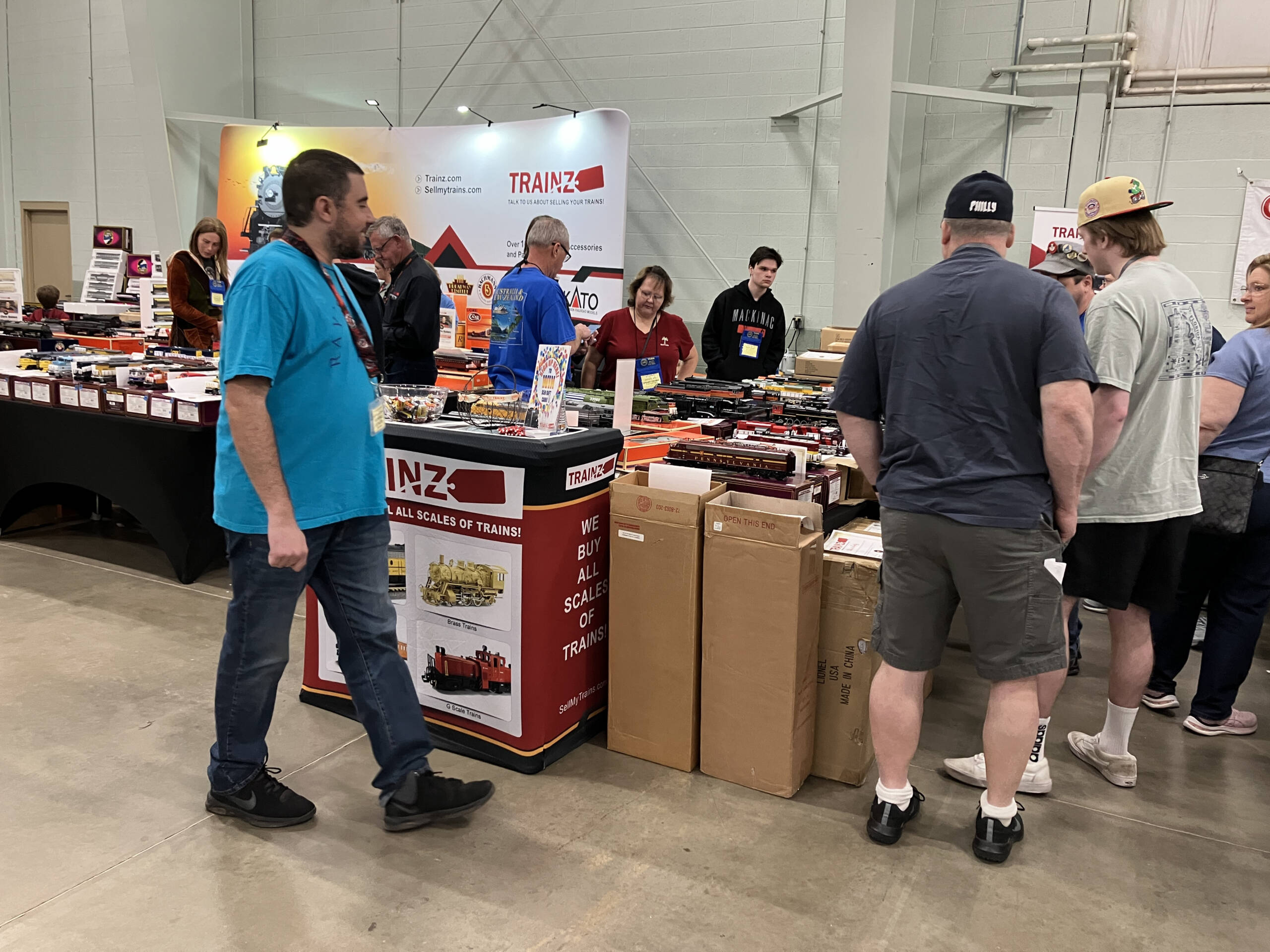Missouri Locomotive Company
PO Box 243
Jefferson City MO 65102
Price: $1,995 + $90 s&h
Website: http://moloco.biz
1:20.3 scale, gauge-1 model of a Lima three-truck Shay; electrically powered; all-metal construction; directional lighting; four-foot minimum radius; ready for installation of sound, smoke, and other electronics; motor geared to drive shaft. Dimensions: length over end beams, 18″; width, 43⁄8″; height, 7 1/4″. In 1:20.3 scale, this works out to 30′ 5 1/2″ x 7’5″ x 12’3″, respectively
Pros: Excellent workmanship; high level of detail; excellent paint and lining; perforated tender floor for speaker installation; electrics easily accessible; power pickup from all wheels; correct scale/gauge combination; smooth running; superb slow-speed performance
Cons: Gear to drive shaft clearly visible between counterweights; pronounced motor/gear noise
Missouri Locomotive Company has a reputation for producing high quality, limited-production models of unusual locomotives, usually connected with the logging industry. This one is no exception. The vast majority of Shay-type locomotives had two powered trucks. Occasionally, circumstances called for a third. Power is transmitted to this third truck by the same driveshaft that powers the first two. The second (middle) truck is positioned under the cab, while the third is placed under the enlarged tender section, which is, in effect, a separate car.
The model comes securely packed in a plywood crate with a slide-off top. Two pages of detailed instructions are supplied just for unpacking the locomotive. These cover all steps of the process and should be adhered to. The tender/third-truck unit is packed separately and, once unpacked, needs to be attached to the engine unit. The power cable is first connected, then the sliding driveshaft piece is inserted into its opposite number while the tender’s drawbar is simultaneously attached to the engine. A spring-loaded pin holds it in place. Once these are together, the detail parts (packed separately) can be applied. These include the smokestack screen and link-and-pin couplers. Also supplied are Allen wrenches and extra screws. The instructions include notes on modifying the packing so that the engine can be transported intact, as well as lubricating instructions.
The engine is a fine-looking model of an attractive, well-proportioned prototype. It is painted black with white lining. The boiler jacket has a Russia-iron finish. Paint and lining quality are very high. The detail level is also very high, and includes a polished brass bell and whistle, prototypical plumbing, and all valves, levers, and piping on the backhead of the T-boiler.
Cylinders are fully detailed as well, and the Stephenson’s valve gear is faithfully reproduced, with working eccentrics. All structural and most underbody detail is also present.
The motor is housed in the boiler and its power is transmitted to the driveshaft through a gear train. These gears are visible where they join the driveshaft between the cylinders. This is my only niggle with the appearance of this engine. The gears are unpainted brass. There is probably no other way to power the driveshaft on such an exposed system as this but if the naked brass gears had been blackened, at least they would be less obtrusive.
In operation, the engine is quite smooth. It is geared down to a very great extent so that the top speed is (estimated) around 10 scale miles per hour at 24V DC. Given the nature of this locomotive and its intended use in deep forests on poorly laid track, this is probably just about right. Because it is geared down so much, it’s low(er)-speed performance is phenomenal. At low voltage, it will creep almost imperceptibly. Acceleration up to its top speed is smooth and gradual. However, there is distinctly audible gear whine. I don’t know if a sound system would cover this or not.
The engine has been designed to accept a smoke unit, sound system, and other electronics. The top of the dummy water tank lifts off, revealing a large space in which electronics could be housed. Depending on the electronics desired, there may even be room for a small battery pack for dead-rail operation. The floor of the tender is perforated for the installation of a speaker. Missouri Locomotive Company offers a separate Phoenix sound kit for this engine ($250).
This is an attractive model of an unusual deep-woods logging engine. It looks great in operation, with its rods flailing and its driveshaft rotating as it creeps along. With its low gearing, it should be powerful enough to haul just about anything you can put behind it up to its weight limit, as well as traverse steep hills and raggedy track with ease.





